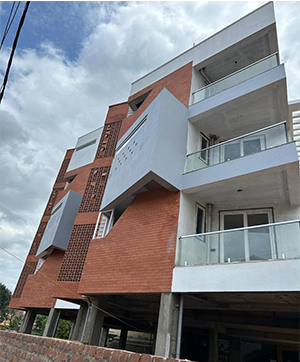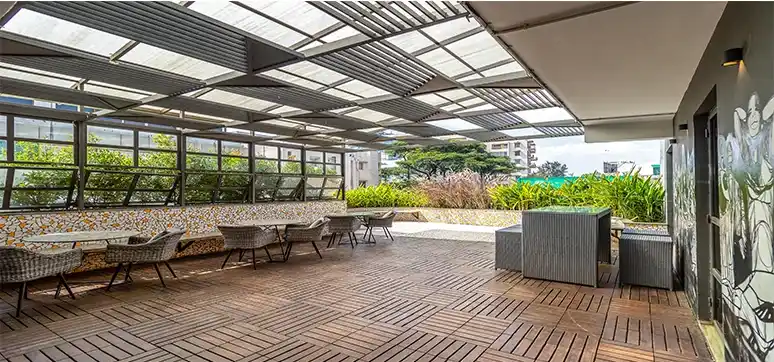FAÇADE DESIGNS FOR FUTURE
My practice is based on the belief that one can’t leave the past behind when talking about the future. Looking at facades and fenestration through this lens, I see a gradual shift from facades of today having to primarily ‘look’ a certain way, to future facades having to primarily ‘function’ a certain way, taking a U-turn to return to age-old practices of buildings driven by the logic of climate, function, street engagement, etc. and not just by global trend. I also anticipate that perhaps by 2050, building norms will direct or even mandate façade design taking into consideration region (Climate), location (urban/rural) and typology. Sustainability as the basis of façade design, I believe, is the need of the hour and the norm of the future
NEWER MATERIAL POSSIBILITIES

It is exciting to look at a spectrum of material possibilities that are emerging today. I look at a building as having a two-layered skin, a primary sheath (wall, glass, etc.) and a secondary skin (shading device, advertising display etc). I predict an explosion in options and customisable possibilities for both these skins. By 2025 we would see the primary skin shrinking into sleek and skinny membranes that are high-performing and fast assembly products, a huge shift from traditional masonry walls. Secondary skins on the other hand being less functional, will have a wider range of customisable options and possibilities to screen, shade and playfully engage or dynamically display. Parametric design will add to the element of playfulness and possibilities of a myriad of options in this regard, contributing to a whole new language built in our cityscapes.
FAÇADE & FENESTRATION TECHNOLOGIES – 2050
The basis of technology in façades and fenestration I believe is in aiding flexibility and adaptability. Adaptation to changing climatic conditions seasonally, or personalization to a specific person or a group of users and their needs will all be aided through technological interventions. Using technology is especially important in cases where design freedom is limited such as refurbishment of older buildings. I predict that a majority of our current buildings will need re-gutting and makeovers of façade and fenestration in the next 25 years by 2050. Within the limitations of older construction, technology will become critical in the facilitation of such upgrades.














